Mie Goreng – Indonesian Stir Fried Noodles
Mie goreng is Indonesia’s ultimate comfort food, sweet, savory, smoky, and stir-fried to perfection. From classic Indonesian mie goreng to the beloved mie goreng Jawa, these fried noodles are quick to cook, loaded with flavor, and always a crowd-pleaser.
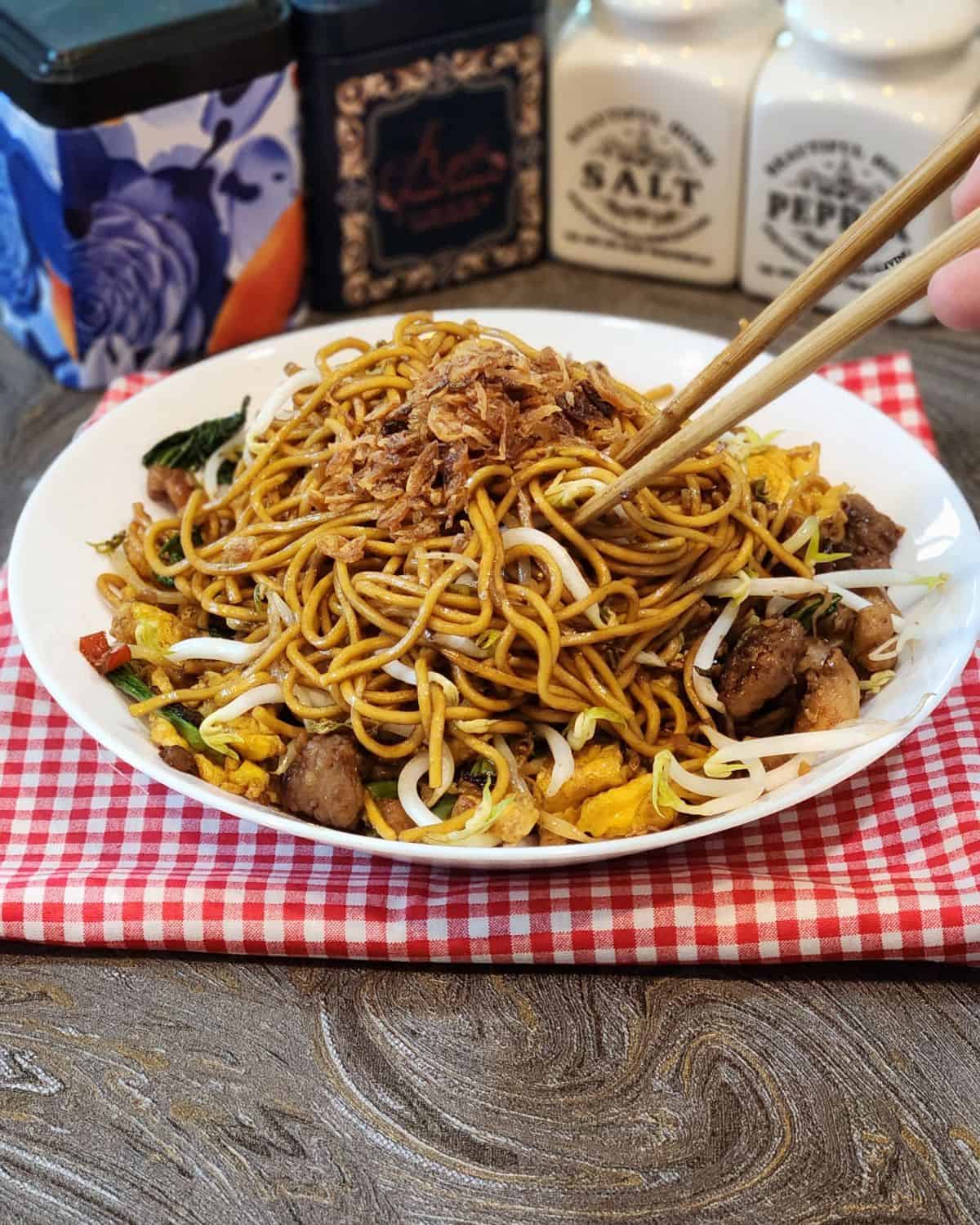
Mie goreng is a classic Indonesian stir-fried noodles recipe, made with egg noodles, chicken, meatballs, vegetables, and egg, plus plenty of shallots for extra flavor. What makes it truly special is kecap manis, Indonesia’s thick sweet soy sauce that gives the noodles their signature savory-sweet taste. This homestyle mie goreng Jawa is smoky, comforting, and always topped with a generous sprinkle of crispy fried shallots.
While kecap manis defines the sweet-savory flavor of mie goreng, not all Indonesian street food noodles lean on it. Take minced pork noodles, for example, another popular favorite that shines with a more savory sauce instead of sweet soy. Together with dishes like sate maranggi, nasi goreng kampung, and chicken satay with peanut sauce, mie goreng shows just how versatile Indonesian cooking can be, with kecap manis often at the heart of the flavor story.
Why You Will Love This Recipe
Recipe Ingredients
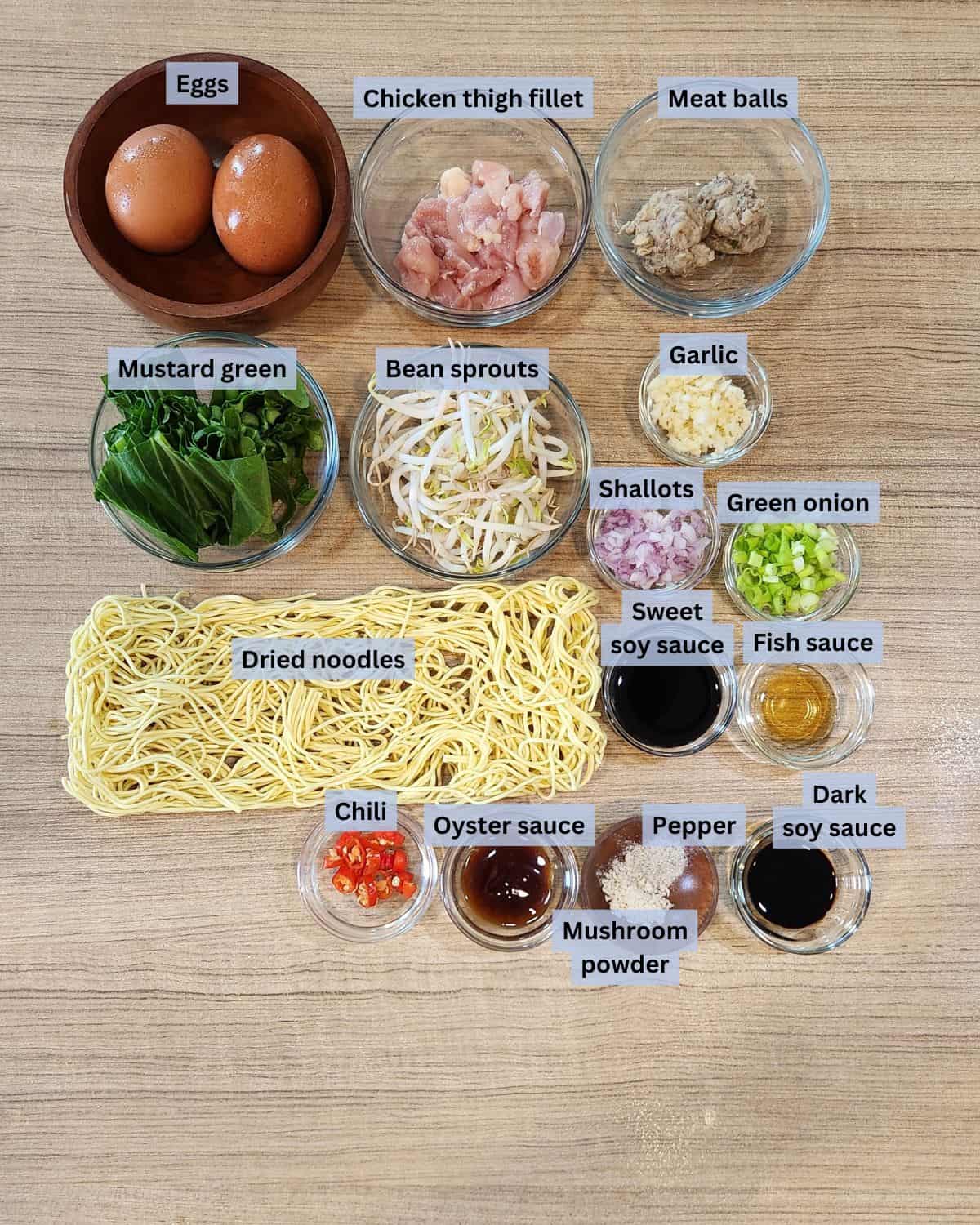
Ingredient Notes
Noodles – Most commonly used noodles for mie goreng is egg noodles. They are dried, so you need to soak it with hot water for a while. Check the instructions on the package so you can handle it well. It usually takes one to two minutes to make it soft. Then the cooking process continues in the wok.
Meat – This is the part where you can put any meat to the dish. Any meat can be included here such as chicken fillet, beef slices, pork slices, fish balls, sausage, fish cake, shrimps.
Vegetables – Vegetables may vary. The most commonly used are mustard greens, chives, and bean sprouts. Cabbage can also work well, but it tends to be watery.
Sweet soy sauce – This particular sauce is the one that make this dish different. Sweet soy sauce or kecap manis can be found in Indonesia. It has sweet umami taste and adds dark brown color to the noodles.
Be sure to check out the full recipe and ingredient list below
Substitutions & Variations
You can substitute the noodles with any variety noodles that you like, wide noodles, rice noodles, etc. Meat and vegetables can be adjusted to your preference.
For anyone doing Ketogenic diet, you can substitute the noodles with Shirataki noodles or Konjac noodles. They are great for noodles substitute and are plant-based.
How to Make Mie Goreng
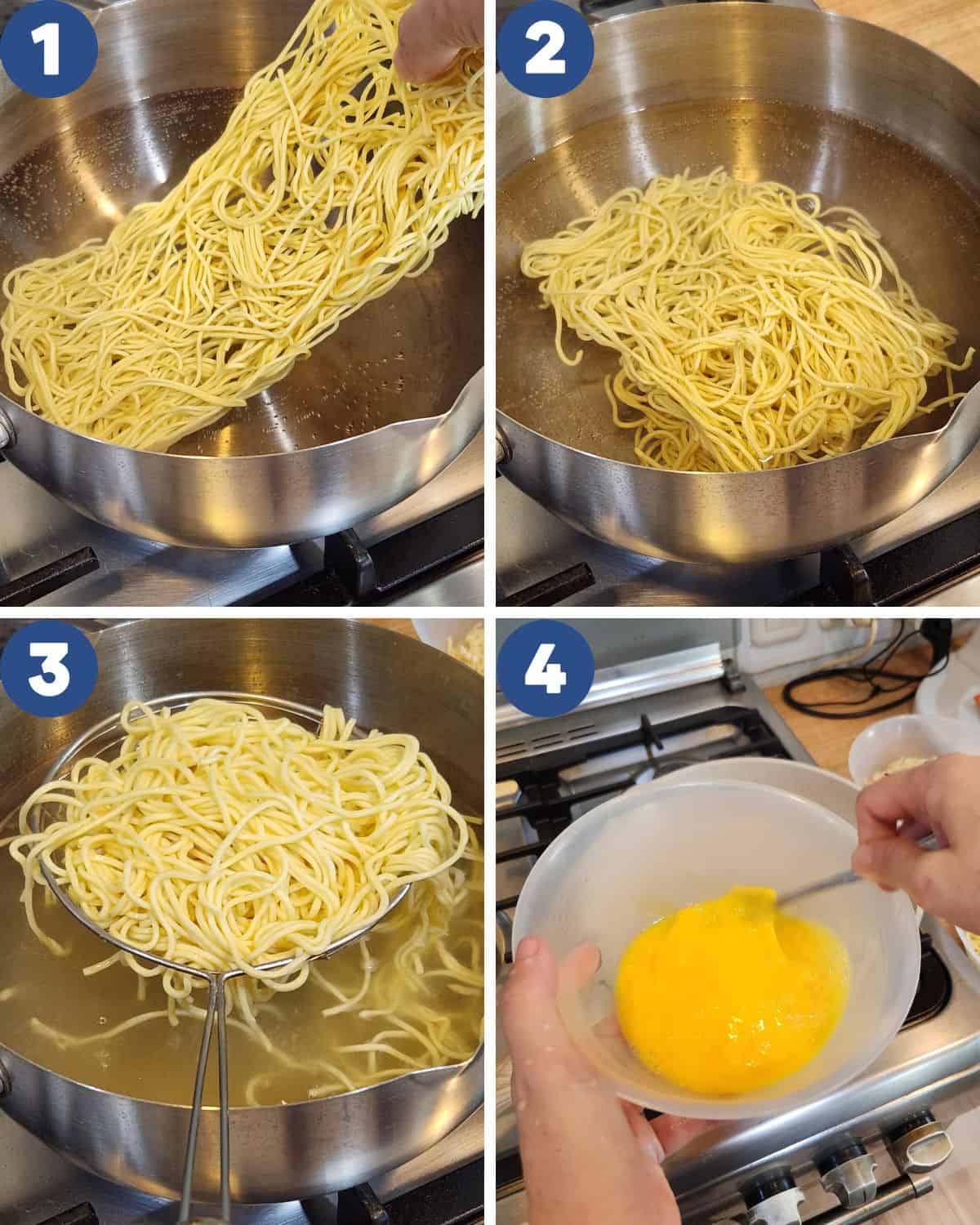
STEP 1. Prepare the vegetables and toppings. Cut the mustard greens into 5 cm pieces. Rinse the bean sprouts thoroughly. Thinly slice the chilies, meatballs, and chicken.
STEP 2. Bring a pot of water to a boil and gently add the dried noodles. Cook for about 3 minutes, or until soft (Images 1, 2, 3). Meanwhile, whisk the eggs with a pinch of salt (Image 4).
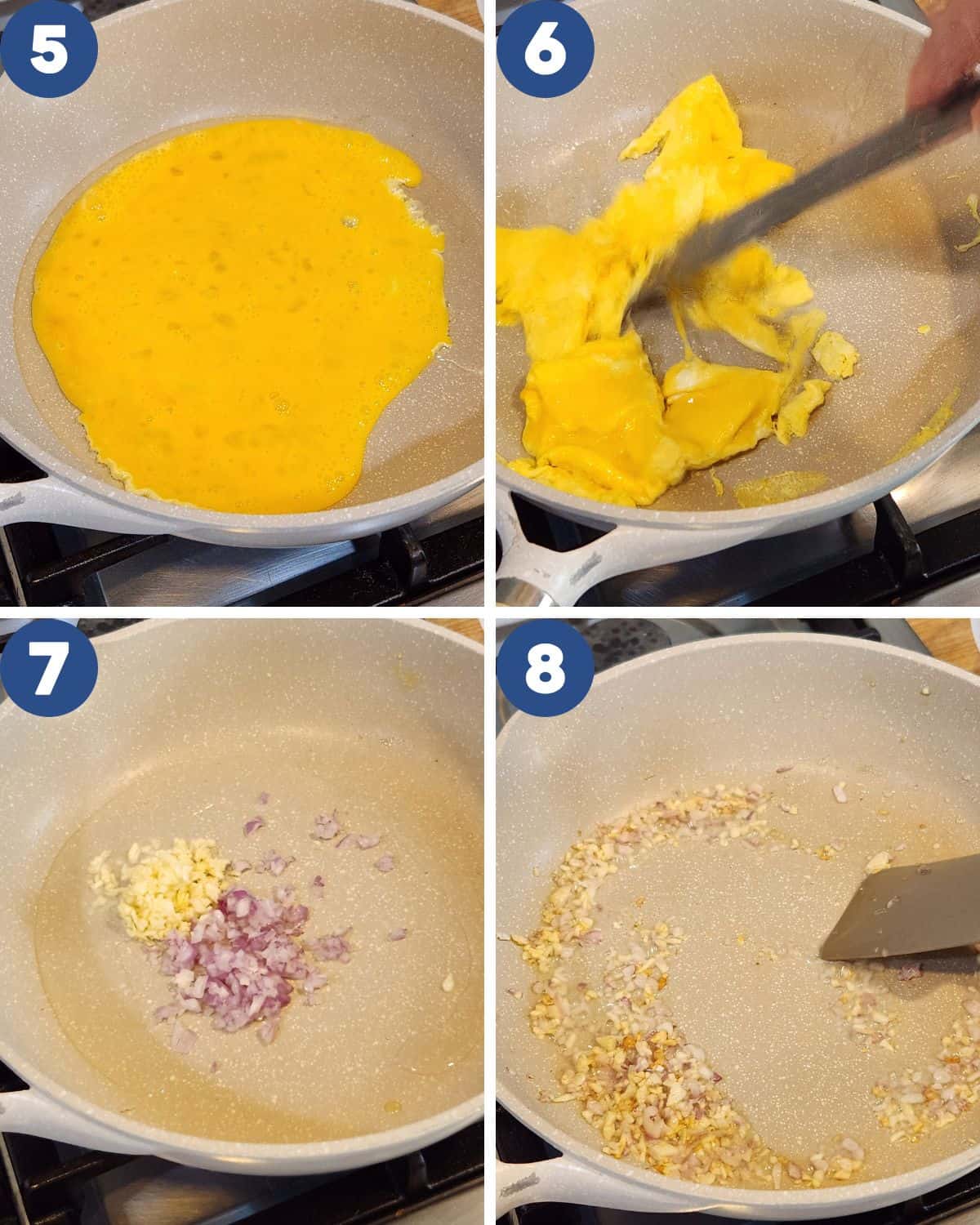
STEP 3. Heat a little oil in a wok or large pan. Scramble the eggs over medium heat until fluffy and bright yellow (Images 5, 6). Set aside. In the same wok, add a bit more oil and sauté the chopped garlic and shallots until fragrant and golden brown (Images 7, 8).
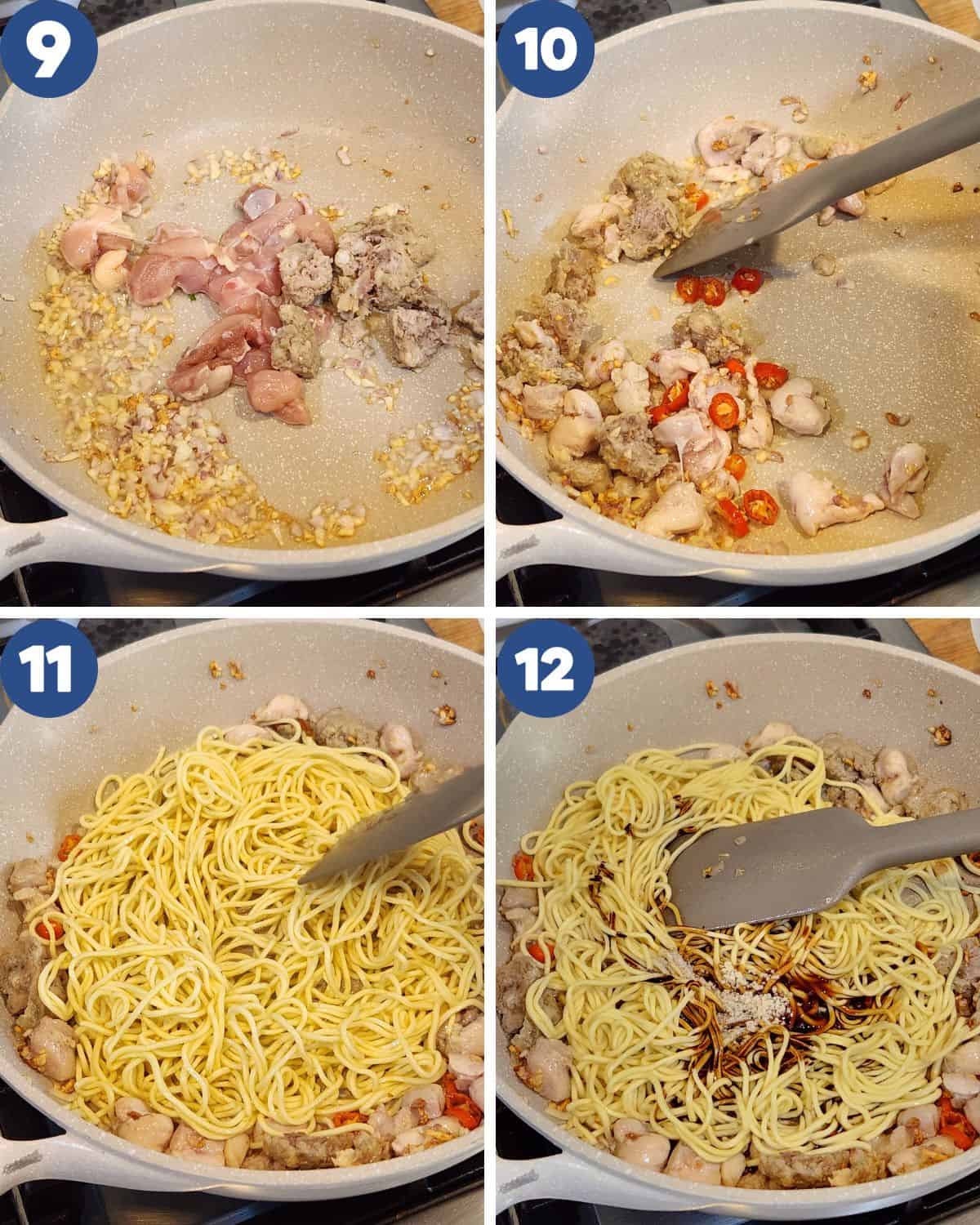
STEP 4. Add the sliced chicken and meatballs. Stir-fry until the chicken turns white and starts to cook through (Images 9, 10). Then add the noodles and seasonings (Images 11, 12).
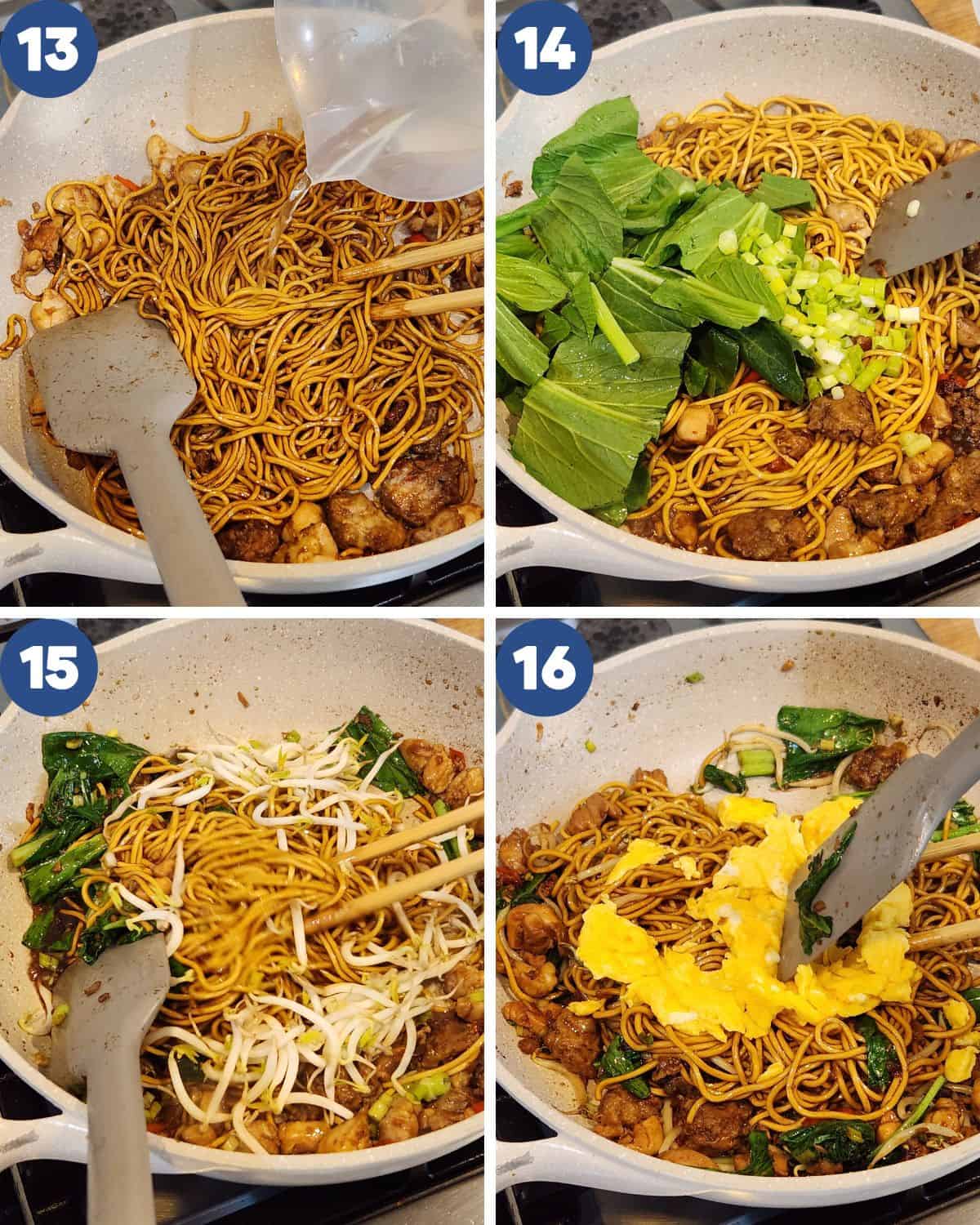
STEP 5. Pour in a splash of water to help mix the seasonings evenly (Image 13). Add the mustard greens and green onions (Image 14), and stir-fry until the veggies are vibrant and slightly wilted. Add the bean sprouts and stir briefly (Image 15), then return the scrambled eggs to the pan and give everything a final quick toss (Image 16).
Pro Tips
- Prep everything first – Once the wok is hot, things move fast! Have all your ingredients chopped, washed, and ready to go before you turn on the heat.
- Mix the sauce ahead of time – Combine all the seasonings in a small bowl before cooking. This not only saves time but also makes sure you don’t forget anything. When it’s go-time, just pour it all in!
- Use the right tools – A long pair of chopsticks and a spatula work great for stir-frying. They help toss the noodles gently and coat them evenly in that delicious sauce.
- Don’t overcrowd the wok – Stir-fry in batches if needed. Too many ingredients at once can lower the heat and make things soggy instead of smoky and delicious.
- Finish with a toss, not a stir – At the end, gently toss everything together instead of stirring too hard. It keeps the noodles springy and the veggies crisp.
How to Serve
Mie goreng is delicious on its own, but pairing it with a few side dishes will make your meal more complete. Serve it with crispy bites like fried shrimp balls, deep-fried meatballs, or soft, savory dishes like green bean eggs, chive eggs, and shrimp omelette. And don’t forget to add Acar Timun on the side. These side dishes are perfect for sharing.
To round it all out, sip on something refreshing like lemongrass pandan tea or enjoy the rich assam milk tea.
FAQs about Mie Goreng
It could be the noodles are not well-cooked yet. You need to pour in a little water to let it cook in the wok.
You can substitute Kecap Manis with molasses or palm sugar. Do not use too much, though or it will be too sweet.
You can substitute the noodles to Konjac/Shirataki noodles. Use only real meat (chicken, pork, beef) instead of fishballs or meatballs or sausage. You also need to ensure the sauce are all gluten-free.
It can be! Traditionally, mie goreng is mildly spiced, but you can always adjust the heat. Add fresh red chilies or spoonfuls of sambal to dial up the spiciness to your liking.
The key difference is the use of kecap manis, which gives Indonesian mie goreng its sweet-salty depth. Compared to other versions like Chinese chow mein or Malaysian maggi goreng, Indonesian mie goreng has a more caramelized flavor and often includes fried shallots, chilies, and a side of pickled veggies or sambal.
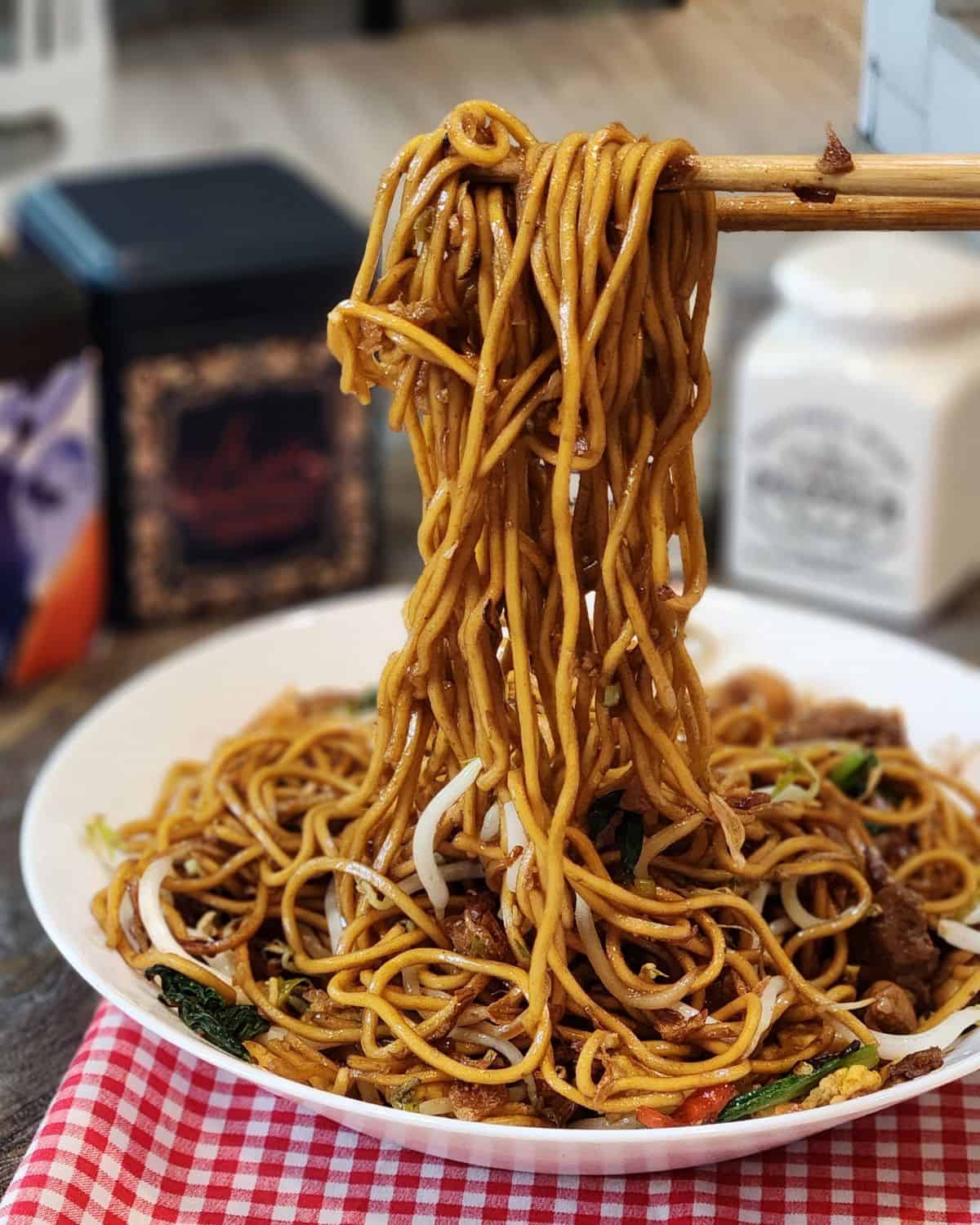
Storage
If you have some leftover, you can keep it in a closed container in the chiller. In my house, it is very rare to have mie goreng as leftover. Reheating is simple, you can just put this stir-fried noodles in the microwave or stir fry in a pan for a few minutes.ot use too much.
Our Favorite
Indonesian Dish Recipes
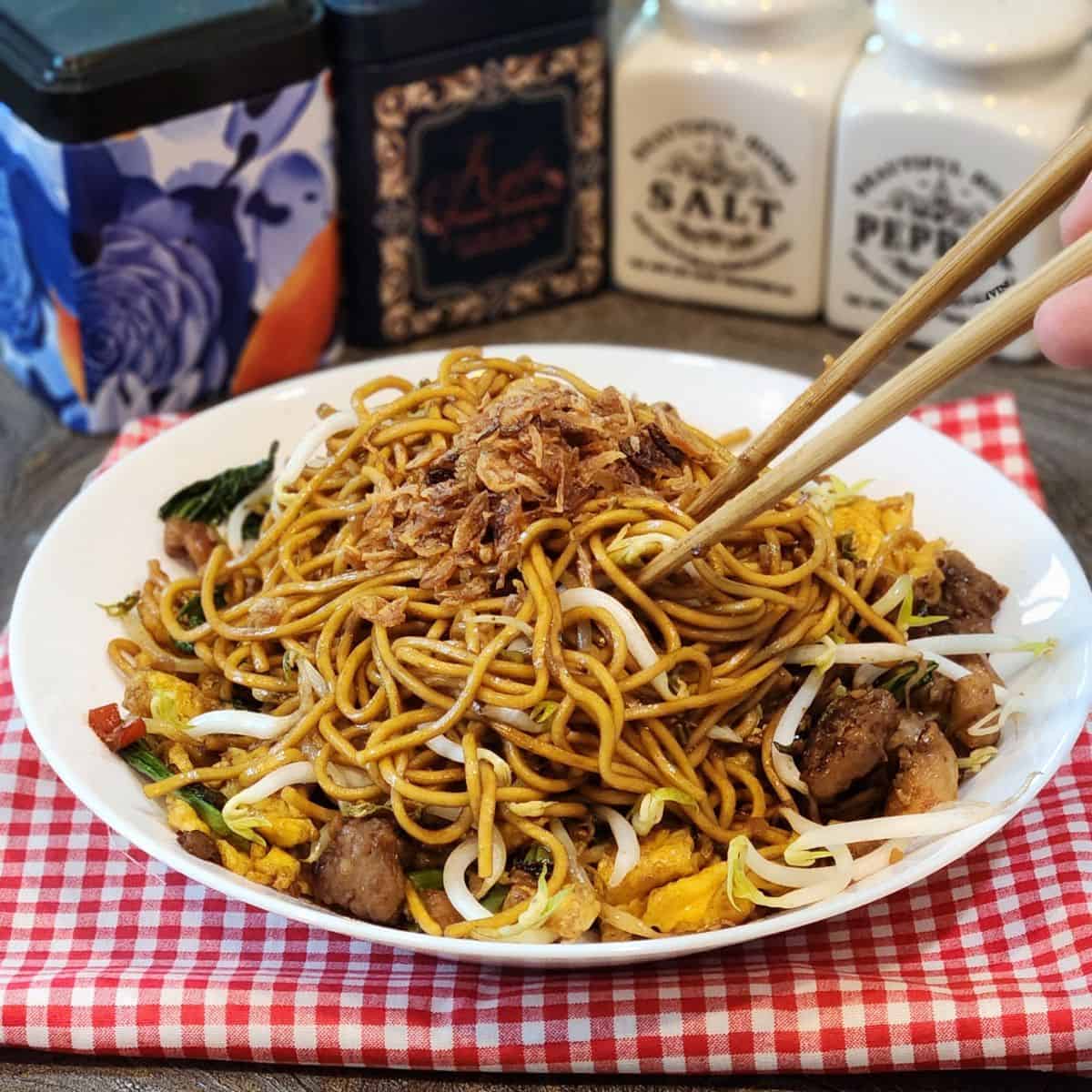
Mie Goreng (Chow Mein Noodles)
Equipment
- 1 wok
Ingredients
- 250 gr egg noodles
- 1 piece chinese sausage
- 1 pcs fish ball
- 2 pcs meat balls
- 75 gr shrimps
- 2 cloves garlic
- 2 pcs red chilis
- 2 tbsp cooking oil
- 3 stalks mustard green
- 1 cup bean sprouts
- 3 stalks green onions
- 2 eggs
- 50 cc water
Sauce
- 1 tbsp oyster sauce
- 1 tbsp dark soy sauce
- 1 tbsp sweet soy sauce
- 1 tsp fish sauce
- 1 tsp mushroom powder or 1/4 tsp MSG (optional)
- 1 tsp pepper
- 1 tsp chili oil optional
Instructions
- Prepare the vegetables. Cut the mustard greens by 5 cm. Wash clean the bean sprouts. Slice the chilis thinly.
- Cut the meat balls, fish balls, and sausage. Peel and devein the shrimps.
- Whisk three eggs with a pinch of salt. Heat some oil. Scramble half the eggs with medium heat so you get a bright yellow scrambled eggs. Set aside. Make a thin omelette with the other half of egg mixture.
- Fold and slice the thin omelette for the mie goreng topping. You will use the scrambled eggs for mixing in the noodles.
- Boil some water. Put the egg noodles in. Boil until quite soft (half-cooked), make sure it is pliable. Drain the water. Sprinkle some oil so the noodles won’t stick to each other.
- Heat some oil in a wok. Put in the garlic. Saute until fragrant and a little bit golden brown.
- Throw in the meatballs, fish balls, sausage, and shrimp. Stir fry until they change color. Put in the chilis.
- Put in the egg noodles. Pour in the mie goreng sauce. Stir fry evenly.
- Throw in the vegetables and green onions.
- Pour in half cup of water. Make sure the noodles are evenly coated with the sauce.
- Transfer the scrambled eggs into the wok. Stir fry evenly.
- The mie goreng is done. Serve on a plate. Sprinkle some fried shallots if you like. Top with the sliced omelette for garnish. Enjoy your stir fried noodles!







Here is an authentic Indonesian mie goreng recipe. I have tried this recipe many times and all my friends love it! It is versatile and very easy to cook.